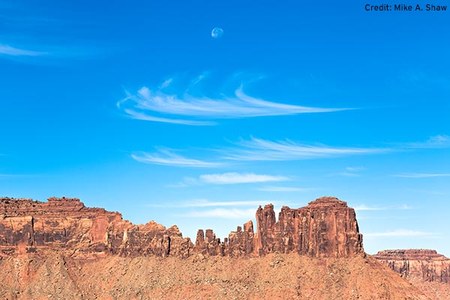
After weeks of uncertainty, a leaked report from Secretary of the Interior Ryan Zinke has reignited concerns about the fate of National Monuments and what this could mean for our public lands. The memo, titled Final Report Summarizing Findings of the Review of Designations Under the Antiquities Act, doesn’t specify boundary changes, but does issue clear recommendations to shrink or alter ten National Monuments.
The leak is the latest development in an unprecedented review of 27 National Monuments kicked off via an Executive Order in April. The review included a public input period, which was met with more than 2.6 million comments to the Department of the Interior – 98% of which voiced strong support for maintaining our Monuments.
Leaked Report
The report calls for opening up ten National Monuments for extractive uses, such as logging, mining, grazing, and commercial fishing.
Six are proposed for reduction, including two that are especially significant to The Mountaineers community: Utah’s Bears Ears - a renowned climbing destination, and Oregon’s Cascade-Siskiyou - a Pacific Northwest treasure.
In the case of Bears Ears, Zinke advocates narrowing the borders and calls on Congress to create National Recreation Areas and/or National Conservation Areas in their stead. However, many stakeholders, including our partners at the Access Fund, spent three years pursuing a legislative path to no avail. The recommendation boils down to striping current protections and asking a gridlocked Congress for a solution that will likely to never come.
As for southern Oregon’s Cascade-Siskiyou, the report recommends shrinking it in favor of more logging on federal lands. The monument was originally designated to protect the area’s rich biodiversity.
To learn more about all the targeted National Monuments, check out this piece from the New York Times. It remains to be seen how the White House will act on the recommendations.
Response
Since the report leaked on September 17, a number of its claims have been called into question. Senator Martin Heinrich of New Mexico pressed John Ruhs of the Bureau of Land Management (BLM), seeking to understand factual errors made about the Rio Grande del Norte National Monument. (The report misrepresents road closures, ranching rights, and U.S. border security.) After further inquiry, Ruhs stated that local BLM land managers were not asked to help write or fact check the report.
Dave Willis of the Soda Mountain Wilderness Council revealed similar accuracy issues with the characterization of Cascade-Siskiyou National Monument. The report says motorized vehicles are prohibited (there are hundreds of miles of road throughout the monument) and aims to improve hunting and fishing (it’s already a heralded destination for both).
For many, the report is the culmination of months of frustration. Adam Cramer, Executive Director of Outdoor Alliance, says “The fact that we found out about this report through a leaked document is as deeply troubling as the murky details that the report contains. Secretary Zinke continues to dismiss the significance of millions of comments from Americans gathered during the review. Our public lands unify us as a people and Secretary Zinke, with this report, has let the outdoor community — and the country — down.”
 The Mountaineers
The Mountaineers